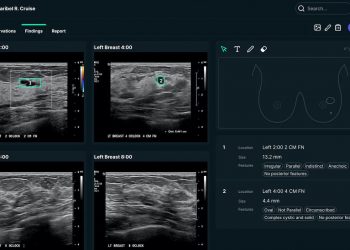A couple of weeks ago, a friend asked me how many COVID shots I’d gotten so far. And for a brief, wonderful moment, I forgot.
“Three,” I told them, before shaking my head. “No, actually, four.” I had no trouble recalling when I’d received my most recent shot (September). But it took me a moment to tabulate all the doses that had preceded it.
By this point in the pandemic, a lot of people must be losing track. “I actually think this is a good thing,” says Grace Lee, a pediatrician at Stanford, and the chair of the CDC’s Advisory Committee on Immunization Practices. Now that so many Americans have racked up several shots or infections, she told me, the question is no longer “‘How many doses have you gotten cumulatively?’ It’s ‘Are you up to date for the season?’”
The flip is subtle, but it marks a rethink of the COVID-vaccination paradigm. We’re at a define-the-relationship moment with these shots, when people are trying to commit—to normalize them as a routine part of our lives. At a September ACIP meeting, CDC officials noted that “we are changing the way we are thinking about these vaccines,” and trying to “get on a more regular schedule.” If COVID shots are here for good, then at least we can be rid of the bother of counting them.
Counting doses was more apt early in the vaccine rollout, when it seemed that two jabs (or even one) would be enough to get Americans “fully vaccinated” and out of the danger zone. When more shots followed, they were often advertised with confusing finality: What some initially described as the booster was later retconned as the first booster after a second one was recommended for certain groups. But with immunity against infection more fragile than some hoped, and a virus that quickly shapeshifts out of antibodies’ grasp, those ordinal adjectives have stopped making sense. Until our vaccine tech becomes much more durable or variant-proof, repeat doses will be, for most of us, a fixture of the future—and it won’t do anyone much good to say, “‘I’m on shot 15’ or ‘I’m on shot 16,’” Angela Shen, a vaccine expert at Children’s Hospital of Philadelphia, told me.
The numbers certainly matter when they’re small: It will continue to be important for people to count off their first few shots, for instance, especially those without a history of infections. But after that initial set of viral-spike-protein exposures, the total count is moot. In most cases, about three vaccinations or infections—preferably vaccinations, which are both safer and easier to accurately track—should be “enough to fully charge up the immune system’s battery” for the first time, says Rishi Goel, an immunologist at the University of Pennsylvania. Further COVID shots will help only insofar as they can recharge the battery toward max capacity when it starts to lose its juice. Scheduling a vaccine, then, becomes a matter of “how long it’s been since your last immunity-conferring event,” regardless of how many exposures a body has racked up, says Avnika Amin, a vaccine epidemiologist at Emory University.
People who are immunocompromised may need four or more shots to establish that initial immunity charge, and their own (maybe smaller) peak capacity. But ultimately, the threshold effect they experience—a point of “diminishing returns”—is similar, says Marion Pepper, an immunologist at the University of Washington. Given how many vaccinations and infections the U.S. has now logged, the majority of Americans “can be done with counting,” she told me.
If we’re going to shift our focus to timing shots, instead of counting them, we’ll have to schedule our shots smartly. Several prominent figures have already come out and said that yearly doses are a top choice. Albert Bourla, Pfizer’s CEO, has been pushing that idea since early 2021; Peter Marks, who heads the FDA’s Center for Biologics Evaluation and Research, has been delivering a similar line for several months. Even President Joe Biden has endorsed the annual approach, noting in a September statement that the debut of the bivalent shot heralded a new phase in COVID vaccination, in which Americans would receive a dose “once a year, each fall.”
That plan is not unreasonable. Shots will have to come with at least some regularity, as variants keep rolling in and immunity against infection ebbs. But re-dose prematurely with a shot with similar ingredients, and the body—still hopped up from the previous dose—may destroy the vaccine before it has much effect, making it about as useful as charging a battery that’s already at 95 percent. SARS-CoV-2 antibody levels drop off steeply in the first six months following a vaccine dose, and then, the rate of drain slows down. It’s as if the immune system goes into “power-saver mode,” Goel told me, which means there might not be a huge difference between revaccinating twice a year or only once. Plus, living out much of the year with lower antibody levels is not as worrisome as it might sound. Although antibodies can be a rather useful proxy for our level of protection, especially against infection, they don’t paint the whole defensive picture: T cells and other fighters tend to stick around for far longer, maintaining safeguards against severe disease. (The immunocompromised and older people may still need more frequent COVID-immunity top-offs.)
The optimal pace for COVID vaccination will also depend on the speed at which the virus spews out variants. A yearly schedule works for influenza, Shen told me, but “we know flu’s cadence.” SARS-CoV-2 hasn’t yet settled down into a predictable, seasonal pattern; its waves aren’t relegated to the chilliest months. The degree to which we, as the coronavirus’s hosts, tamp down transmission also matters quite a bit. Having more virus around puts more pressure on vaccines to perform, especially when there aren’t many other mitigation measures in place. If all this talk of “once a year, each fall” turns out to be another red-herring recommendation, Amin told me, it could undermine any messaging that follows.
All of that said, the autumn regimen may yet stick around because it’s the easiest approach. Flu-shot uptake is far from perfect, but the messaging around it is “simple and clean,” says Rupali Limaye, a behavioral scientist and vaccine-attitudes researcher at Johns Hopkins. After dosing up twice in four weeks as infants, people are asked to get a yearly shot, and that’s it. Compare that with the most convoluted days of COVID vaccination, when people couldn’t dose up without accounting for their age, health status, number of previous doses, vaccine brand, time since last dose, and more. “That’s absolute overload,” Limaye told me. Complicated schedules burn people out—or dissuade them from showing up at all. This fall, when the bivalent shot debuted, a troubling proportion of Americans didn’t even know they were eligible.
Encouraging COVID vaccines at the same, straightforward pace as flu shots would make it easy for people to sign up for both at once, and maybe, eventually, to get them in the same syringe. Vaccines tend to ride one another’s coattails, Shen told me. “In the fall, there’s a bump in other routine vaccines,” she said, because people “are already there for their flu shot.” It would also make a big difference if the COVID-vaccine recipes changed for everyone at the same time, as they do for flu.
If we’re going to pivot from numbering doses to timing them, we might as well take the opportunity to discard the term booster as well. Some people don’t understand what it means, Limaye told me, or they default to a logical question—How many more boosters will I need? Plus, booster may no longer fit the science. “When we start updating formulas, it’s not really a booster anymore,” Amin told me. That’s not how we generally talk about flu shots: I certainly couldn’t tell you how many “boosters” of that vaccine I’ve had. (I don’t know, maybe 14? 15?) Pivoting to a terminology of “seasonal shots” could make COVID vaccination that much more routine.
So, fine, if anyone should ask: I’ve had (count ’em: one, two, three) four doses of the vaccine so far. But more important, I’ve gotten the shot most recently available to me.
Source by www.theatlantic.com











